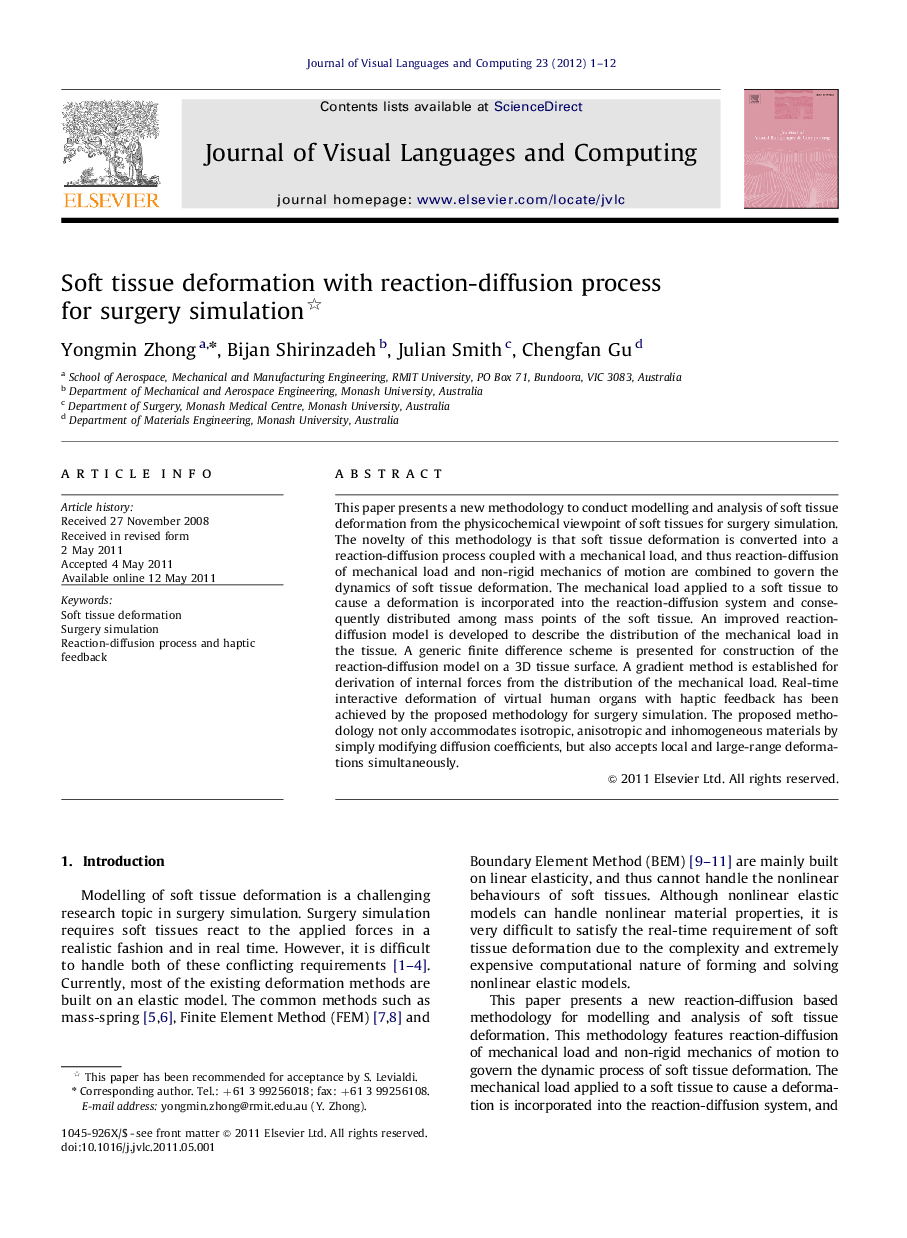| Article ID | Journal | Published Year | Pages | File Type |
|---|---|---|---|---|
| 523528 | Journal of Visual Languages & Computing | 2012 | 12 Pages |
This paper presents a new methodology to conduct modelling and analysis of soft tissue deformation from the physicochemical viewpoint of soft tissues for surgery simulation. The novelty of this methodology is that soft tissue deformation is converted into a reaction-diffusion process coupled with a mechanical load, and thus reaction-diffusion of mechanical load and non-rigid mechanics of motion are combined to govern the dynamics of soft tissue deformation. The mechanical load applied to a soft tissue to cause a deformation is incorporated into the reaction-diffusion system and consequently distributed among mass points of the soft tissue. An improved reaction-diffusion model is developed to describe the distribution of the mechanical load in the tissue. A generic finite difference scheme is presented for construction of the reaction-diffusion model on a 3D tissue surface. A gradient method is established for derivation of internal forces from the distribution of the mechanical load. Real-time interactive deformation of virtual human organs with haptic feedback has been achieved by the proposed methodology for surgery simulation. The proposed methodology not only accommodates isotropic, anisotropic and inhomogeneous materials by simply modifying diffusion coefficients, but also accepts local and large-range deformations simultaneously.
► This study converts soft tissue deformation into a reaction-diffusion process. ► It features reaction-diffusion of mechanical load and non-rigid mechanics of motion. ► It accommodates isotropic, anisotropic and inhomogeneous materials. ► It also accepts local and large-range deformations simultaneously.
